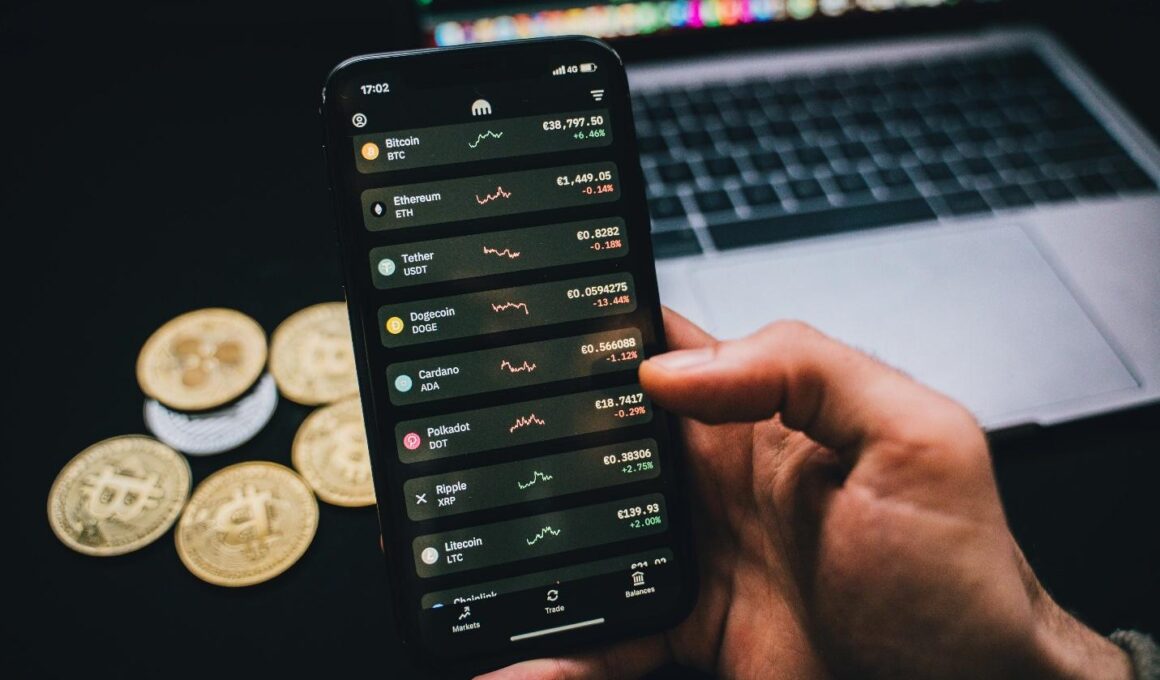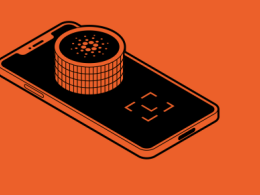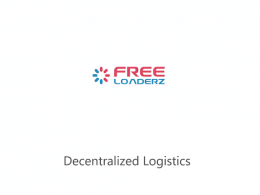Technology moves the world. Technology can’t be ignored. It can only be embraced.
Is blockchain technology over-presented? If the raging transformation is to be believed, we are heading to an era of transparent financial transactions, secure payments, and decentralized governance where each participant holds the power to shape the ecosystem. This belief is strengthened by the ever-emerging use cases for which blockchain technology and cryptocurrencies are applicable. For example, let’s look at Cardano’s four killer applications as a representation. As the tip of the iceberg, Axo is a decentralized exchange with advanced functionalities, Indigo is a platform where you can create synthetic assets, World Mobile is a new telecommunication spectrum, and Iagon is a marketplace for decentralized storage and computing resources. It can be observed that Cardano is redefining different industries. To bring in some more perspective, let’s refresh our knowledge of the evolution of blockchain technology.
Let’s examine Bitcoin first. Bitcoin is the biggest cryptocurrency by market cap and the father of blockchain technology. Its emergence as digital money offered a substitute for established financial institutions and centralized government bodies. While it still offers more advantages as a store for value and a buffer against inflation, Bitcoin is well known for slow transaction times and high costs. Next is Ethereum, a second generation of blockchain technology, where more utility of blockchain technology emerged with the introduction of smart contracts. That is the first family for which more complex operations were initialized, and we saw decentralized applications (dApps) come to life. The only problem with this iteration is that, yet, even with the improvements and shifts in architecture paradigm, this technology was not scalable.
Let us now turn to Cardano, a third-generation blockchain technology and a transformation where we see enterprise adoption and more utility in nearly all industries. In addition, Cardano is built with incentives as a unique approach to scalability, security, decentralization, inclusivity, and sustainability. Cardano has adopted a peer-driven scientific approach to become a scalable blockchain, and its architecture is well-thought-out, which can be seen in the speed of its transactions. The trio shows how fast a blockchain network makes transactions directly impact the overall utility of the cryptocurrencies around it. This begs the need to investigate what factors influence the speed of these transfers.
In this article, we shed light on the factors that affect the speed of crypto transactions. We’ll also examine why speed matters in real-world applications and discuss a few strategies for optimizing your transfers. At closure, we will link you to the steps that blockchain ecosystems like Cardano are using to improve the speed of transfers. Let’s get started!
Key Factors Affecting Crypto Transfer Speeds
So numerous are the factors influencing transaction speeds. As per your experience in the next transactions you perform, whether swift or delayed, you will understand why either happens.
Network Congestion
A persistent challenge across blockchain technology is network congestion, a phenomenon where the number of submitted transactions surpasses its processing capacity. The outcomes of such a scenario could lead to delays, higher gas fees, or a frustrating user experience. It could also introduce market volatility, centralization, and security risks. Network congestion becomes even more confounding because small micro factors have inputs on it. These include:
- Mempool — A group or collection of unconfirmed transactions queued for inclusion in the next block. When transactions are broadcasted to a blockchain network, they are added to the mempool, where they remain until they are confirmed.
- Candidate/Proposed blocks — Proposed by miners or validators, these are blocks with unconfirmed transactions that have been broadcast to the network but are yet to be included in the blockchain.
- Finality — A checkpoint at which a transaction becomes irreversible. If a transaction reaches finality, it becomes a permanent record on the blockchain.
- Longest chain principal — A rule that implies that the most valid version of the blockchain has the highest computational work invested in it, the chain holding the largest number of blocks. It is the bias from which blocks are considered valid. Others are short, hence the name orphan chains and the stale ones get discarded.
When network congestion occurs, miners use congestion algorithms to manage the queues and thus prioritize higher gas fee transactions. Network congestions often occur during periods of high demand.
Block Size and Block Time
Every blockchain network has its own block size and block time. The block size is the amount of data a block holds, typically limited to maintain the integrity and efficiency of a network. This has been a matter subject to debate across different networks. To some, block size is the number of transactions a block can hold expressed in megabytes, while it is also the maximum computational power (gas) a block can handle to others. This, therefore, implies that the bigger the block size, the more the transactions and more complex transactions will require more gas fees. The point here is that some networks will have dynamic sizes, while others will increase their size as new updates to the network get rolled out.
On the other hand, block time is the period it takes the network to create a new block. In addition to maintaining network integrity, block time gives miners time to verify network transactions to avoid a double spending problem. In proof of work (PoW) networks like Bitcoin, block time is also considered the difficulty level in the mathematical problem that miners solve to append new blocks to the chain. An adjustment mechanism is therefore deployed such that if blocks get added to the network too quickly, the difficulty increases, and conversely, the difficulty reduces if new blocks are added at a slower pace.
In a combined way, block size and block time have a significant influence on how long a transaction will take. However, this is often dictated by the underlying agreement algorithm that powers the blockchain network. This, then, brings us to the next point: consensus mechanisms.
Consensus Mechanism
A consensus mechanism (or algorithm) is the process — often available as a programming model — that blockchain networks use to achieve agreements about the states of data. In layman’s language, this is a method that the network uses to realize agreement, security, and trust across decentralized computer networks. It is also the technique that the network uses to update the state of the blockchain and maintain operational integrity. While there are many available consensus mechanisms, proof of work (PoW) adopted by Bitcoin and proof of stake (PoS) used on both Ethereum and Cardano are the most common ones. The former rewards miners with Bitcoin on node validation, while the latter randomly rewards stakeholders, with those having the highest stakes having chances of being selected. Both methods are used to validate transactions, but generally, the PoS method is way faster.
Gas/Transaction Fees
The transaction fee, often variable depending on the blockchain platform, is a convenience charge given to the financial provider. In fintech, the payment provider charges a fee to facilitate transactions. This is often how many companies generate revenue, and it is likely a flat rate or percentage per transaction. In the world of crypto, transactions operate in the same way, but this time, the fees are given to node operators to secure the network. There is also another subset of transaction fees, known as gas fees, only that is specific to smart contracts. As an incentive, the rewards from transaction fees encourage more participants to mine in PoW blockchains and stake in the case of PoS. Often, node operators and validators will prioritize transactions with higher gas fees over those with less.
Node Distribution
The long and short of nodes is that they are computers, part of and with the power to interact with a blockchain network. Each node is a separate computer that stores a copy of the blockchain’s information. This, in effect, means that nodes can verify each other’s information, but overall, the more nodes you have, the higher the difficulty of manipulating the system since you would need to control at least 51% of the nodes, which is practically impossible. Nodes store all the information the blockchain needs to operate, and in turn, they verify transactions on the blockchain or reject those that do not fit the network’s mold. Depending on the type of blockchain, we have different kinds of nodes, so let’s look at a few (the most common ones).
- Full nodes — These store full copies of the network ledgers and form the foundation of many blockchains. They provide copies of the chain to new nodes.
- Light nodes — These do not store full copies of the chain, are present in all blockchains and are only tasked with transaction verification.
- Miner nodes — In proof-of-work consensus algorithms, these verify transactions and are responsible for awarding block rewards for solving complex mathematical puzzles.
- Validator nodes — In proof-of-stake mechanisms, they create new blocks as chosen in relation to funds locked in the system.
The distribution of nodes has a direct effect on the speed of transactions. If a network has a high node density, it is obvious that the network can verify and confirm many transactions without latency. The converse is also true — few nodes lead to slow speeds. We’ve mentioned a few node types, but these aren’t the only ones available, and each type influences transaction speeds. Miner nodes on Bitcoin use a lot of computational resources, making transactions slower.
Other nodes, such as archive and pruning, will prioritize data efficiency and storage over transaction speed. Network congestion, as introduced before, is directly dependent on how nodes are distributed on the blockchain. If nodes are well distributed, they can handle an increased volume of transactions, and if they are concentrated, this is a bottleneck that results in slow transactions.
Geographic factors
A real backbreaking burden in crypto and blockchain technology is the role of geographical factors in the speed of crypto transactions in terms of distance and network latency, node distribution and density, internet infrastructure and bandwidth, regulatory environment, and power and cooling. The farther the distance a crypto transaction must travel indicates longer waiting times depending on the signal transmission and latency in the network.
Areas with higher node densities are likely to enjoy faster speeds, and zones with better quality internet infrastructure, such as fiber optics and 4G/5G networks, are bound to expect the same. Since crypto came into place, regulation has been one of the biggest concerns, with some areas having more intense restrictions than others. For example, countries with bold capital controls or anti-money laundering laws will experience slower transactions than others. And nodes, computers, in other words, require reliable power and cooling for a smooth uptime. This impacts performance directly, touching on the transaction speed.
Real-world Use Cases: Why Transaction Speed Matters
We are now aware of the factors that influence the speed of crypto transactions. This leaves us with the question of why this is important. Speed is important in real-world setups; here is why:
- Instant payments and transfers — Most people expect instant payments when paying for products or services. A higher blockchain speed ensures timely asset transfers.
- Avoiding price volatility — Due to price fluctuation, transfers must be fast. When they are slow, assets can likely be lost. Most people want to strike the price of an asset at the value on which the transfer is initiated.
- Lower transaction fees — A busy blockchain network compels you to pay higher fees to have transactions settled faster. Faster transactions reduce the chances of network congestion.
- Better user experience — If a network is slow, users are likely to avoid using it in future transactions or operations. People want to be confident about the medium of their transactions.
- Improved security — Faster transactions are more secure in the context of vulnerabilities like double spending where the blockchain may be manipulated.
- Business and commercial transactions — As a merchant or business owner, it is important to have payments from your customers reflected instantly. Slow transactions frustrate customers during time-sensitive tasks like online shopping or travel bookings.
How to Optimize for Faster Transactions
It is clear that most factors controlling the speed of crypto transactions may not be in your control, with the heavyweights narrowing down to the design and implementation of blockchain networks. But if you are determined to optimize your speeds, there are a few things you can do. Essentially, choosing the right network will go a long way in getting the desired user experience. It is worth noting that previous blockchain generations will not match the speed and reliability of a third-gen family like Cardano. That aside, you may want to explore and leverage visualization tools to gain insights into the state of the network before initializing transactions. In the Cardano ecosystem, we have a pool of developer tools that are easy to get hands-on with, even if you come from a non-technical background.
Additionally, choosing the right network allows you to commit to the right assets for your transaction. Look at an ecosystem like Cardano. It should not come as a surprise that there are plenty of ongoing scientific developments and advancements meant to improve the network’s throughput and scalability. We are currently seeing the development of layer two solutions like Hydra and side chains, which, on completion, are a gateway to faster transactions. On that basis, we invite you to look at and explore the infinite possibilities of increased speeds.










